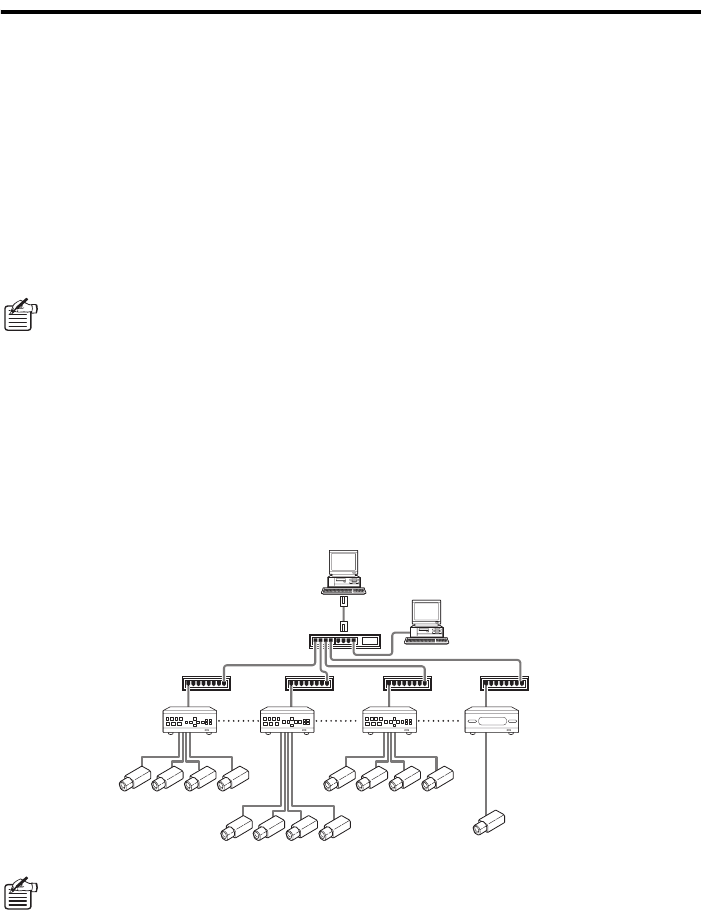
3 English
Network Configuration
b Network Device Configuration
With the DVR Utility Software, you create a monitoring system that consists of DVRs, monitoring
cameras, and one or more computers that act as remote controllers, all of which are connected via
a dedicated independent network.
● Supported DVR Models
The DVR Utility Software supports the SANYO DVR models listed below.
All DVRs need not be the same model; a single network can contain two or more different models
as needed.
• Single-channel models: DSR-M800, DSR-M800P, DSR-M800PA, DSR-M810, DSR-M810P
• Four-channel models: DSR-M804, DSR-M804P, DSR-M814, DSR-M814P
● Network Scalability
The dedicated network can accommodate the following:
• Up to 1,000 DVRs in the standard configuration
(or up to a maximum of 4000 DVRs when an appropriate subnet mask setting is used)
• Cameras: Up to four times the maximum number of DVRs
• Up to eight computers (one master plus seven slaves)
• For SANYO DVR models not listed above, visit the SANYO Web site
(http://www.sanyosecurity.com) and check the latest information.
• For the sake of simplicity, this guide assumes the use of the DSR-M804 or DSR-M814.
About Master and Slave Computers
During initial setup, you specify a single computer that is authorized to register or delete
networked DVRs, and this is called the Master computer. In addition to the Master computer,
you can configure up to seven additional computers that are not authorized to register or
delete networked DVRs, and these computers are called Slave computers.
After you have started the DVR Utility Software on a computer and logged into the system,
you can determine whether to configure the computer as either “Master” or “Slave” using the
[Options] window accessible from the Initial Set menu. For more information, see P73.
DVR1 DVR2 DVR3 DVR4
Master computer
Slave computer
Switching hub
Switching hub


















